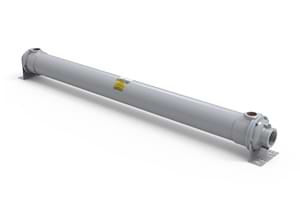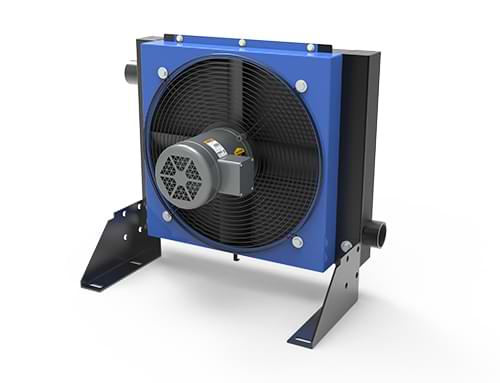Aftercoolers for Air Operated Machinery
This technology uses a compressor to pressurize atmospheric air, which is then channeled through valves, hoses, and actuators to power tools or machinery. Pneumatic systems are prized for their simplicity, durability, and ability to operate safely in hazardous environments—such as explosive atmospheres—where electrical systems might falter.
Applications
- Moisture Control: Condensation Management: As compressed air cools in the aftercooler, its capacity to retain water vapor decreases, leading to condensation. This process allows the liquid to be efficiently separated and removed via drains or separators, delivering drier air to prevent corrosion and damage to sensitive components like valves, cylinders, and tools.
- Air Quality: Aftercoolers enhance air quality by reducing humidity in compressed air streams. By cooling the air, they extract excess moisture that could otherwise mix with lubricants or contaminants, forming sludge. This ensures cleaner, drier air reaches pneumatic machinery, minimizing wear and maintaining optimal performance over time.
- Consistent Power Delivery: Cooler, denser air from aftercoolers maintains steady pressure throughout the pneumatic system. This enhances the power output of air-operated tools like drills and actuators, reducing energy losses. By stabilizing airflow, aftercoolers improve operational efficiency, lower compressor strain, and decrease overall energy costs in industrial applications.
Water Cooled Aftercoolers
Compressor Cooling
- Fixed or Removable Tube Bundles
- Material Options Available
- Standard and Custom Options

Air Cooled Aftercoolers
Compressor Cooling
- Use Ambient Air to Cool
- Variety of Motor Options
- Standard Pressures of Up To 250 psi

More About Instrument Air
A critical element in pneumatic systems is the aftercooler, which cools compressed air after it exits the compressor. During compression, air temperature can soar past 200°F (93°C) due to increased pressure. This hot air carries water vapor, naturally present in the atmosphere, which can damage machinery if not managed properly. Aftercoolers address this by cooling the air and removing moisture, ensuring the system runs efficiently and lasts longer.
Here’s why aftercoolers are vital to pneumatic machinery:
- Moisture Control: As compressed air cools in the aftercooler, its ability to hold water vapor drops, causing condensation. This liquid is then separated out, delivering drier air to the system and preventing corrosion in components like valves and cylinders.
- Equipment Protection: By reducing moisture and heat, aftercoolers shield machinery from rust, wear, and breakdowns, significantly extending the lifespan of tools and actuators.
- Efficiency Boost: Cooler, denser air maintains consistent pressure, enhancing the power output of air-operated devices and reducing energy waste.
The mechanics of an aftercooler are straightforward yet effective. Typically, it employs a heat exchanger that uses ambient air or water to lower the temperature of the compressed air. Once cooled, the air passes through a separator or drain to remove condensate, ensuring only dry air flows downstream. This process is crucial for industries requiring precision, such as pharmaceuticals or electronics, where moisture could contaminate products.


